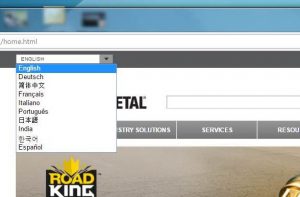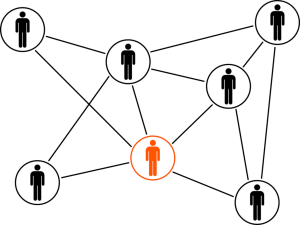Your landing pages are the worker collecting tickets for the Ferris Wheel at the carnival. They can either calm fears and encourage people to take the risk OR they can scare people away. There are a few simple and powerful principles you can use to ensure that your landing pages communicate benefit, prove your worth, and mitigate risks your visitors feel.

In the e-book, “The 7 Principles of Conversion-Centered Design,” Oli Gardner, the founder of the company Unbounce, makes an important differentiation between landing pages and other pages on your website:
“Unlike homepages that call for self-guided exploration, landing pages are uniquely equipped to be optimized for conversion because they are laser focused on a single goal: that of your marketing campaign.”
If you’re struggling with landing page conversion, it might be time to take a hard look at your landing pages. Chances are good that you’ll find something that you can optimize. Don’t just take our word for it; we’ve compiled a list of recommendations from other great marketing minds:
Eliminate All Distractions
There should be only one single and clear action for your users to take when they arrive on a landing page. Be sure to remove the main navigation and avoid linking to other pages on your website. Give the user all the information they need to make a decision and no more.
In this article from Forbes, John Rampton points out that having too many distractions dilutes the conversion message on your landing pages,
“The main goal of your landing page is to get conversions. Any other functions, information, or interactive elements you include will only serve to dilute the number of people you convert… your call-to-action should be big, bold, obvious, and shouldn’t have to compete with other elements.”
Cut the Jargon – Use Plain Language
Marketers are often enchanted by buzzwords that don’t have a lot of meaning. It’s important to simplify your messaging so that it’s easily understood by anyone reading it. Try not to use your brand names, acronyms, or other industry terms on your landing pages. Communicate as clearly and concisely as possible.
Focus on cutting out unnecessary and superlative language until you have your message in its purest form. By clarifying your landing page messaging, you help the user understand exactly why they care about what you have to offer. One article from ConversionXL reminds us to keep in mind who we are really writing for:
“Do not try to woo people with fancy, complicated business language – it just doesn’t work. You write for people, it’s people who read your site. A marketing director or a purchasing manager are people too. Don’t write for companies, write for people.”
Highlight the Value Proposition
The first step in creating any copy for a landing page should be, asking yourself “What’s in it for them?” As digitally-connected consumers, we have instant access to information at all times. If a viewer can’t figure out why your product, service, or offer has benefit to them, they will move on without a moment of hesitation.
Understand the common pain points that your customers face and how you can help them solve those problems. Communicate clearly what tangible results your users should expect to see and remember to keep them brief and clear, just like this example from Uber, which highlights their specific and unique value proposition.

By focusing on messaging that resonates with common pain points, they can attract people who are searching for something different from their job. MarketingLand pushes us to go beyond simple benefits, but instead promise something extraordinary,
“Let customers know the unique things you have to offer to get their attention. Value proposition should be something extraordinary they get by opting in for your service.”
Don’t Reinvent the Wheel
Your landing pages aren’t the best place for experimenting with new user experience designs. Keep these pages clear, simple, and easy to navigate. Don’t confuse users by creating extraneous animation, hyperlinks, or functionality. They are flashy elements that distract from your laser-focused goal.
If you are thinking of adding a new element to a landing page, ask yourself, “will this help make the offer and benefits more clear to the reader?” If the answer is no, save your idea for your homepage or other website page.
The AdVenture Media Group describes it this way:
“Make every element on the page as familiar as possible. Don’t make a complex (or cool) way for people to find essential information. Follow the same structure for navigation that other similar sites are using.”
Let Others Prove the Worth of Your Content
People trust other people. It’s as simple as that. Your audience is more likely to trust the words of your clients and users over you. Adding social proof to your landing pages is a great way to add credibility and trust.
If you don’t have social proof from real clients, there is no better time to start gathering it! Look for comments on social media, ask your customers to submit a survey or reach out to them directly.
Don’t just take our word for it, these stats from Entrepreneur show what a difference social proof can make,
“Studies show that 70 percent of consumers say they look at product reviews before making a purchase, and consumer-generated product reviews are 12 times more trusted than product descriptions from manufacturers. If you want to sell anything at all, you need credibility.”
Keep Your Forms as Brief as Possible
Your customer’s information is their digital currency online. In the same way that users will pause before swiping their credit card at the store, they will pause and think about how much they are willing to give in exchange for what you are offering on your landing page.

Consider what stage in the buying process a person would be when they are looking at your landing page. Try to match up your offer with the number of form fields you are collecting.
Tereza Litsa of Search Engine Watch put it this way:
“People are wary of sign up forms and giving out their personal details, so make sure that you’re only asking for what’s necessary. Find a reason to convince users to trust you, whether it’s a reward, or a highly appealing and relevant landing page, and return the trust with a quick and simple registration process.”
What’s Next?
Start by analyzing your current campaigns. Look at your lowest converting pages first. See if you can uncover what might be causing your users to question, second guess, or leave the page. Spend some time optimizing your pages for conversion and, with a lot of strategy and a little luck, watch new leads start rolling in!
Digital & Social Articles on Business 2 Community
(91)
Report Post








